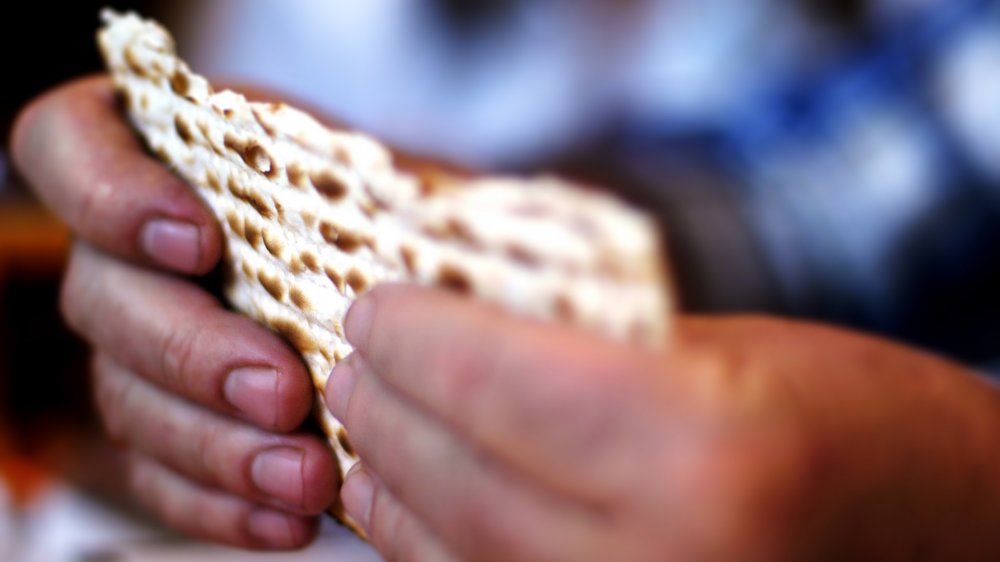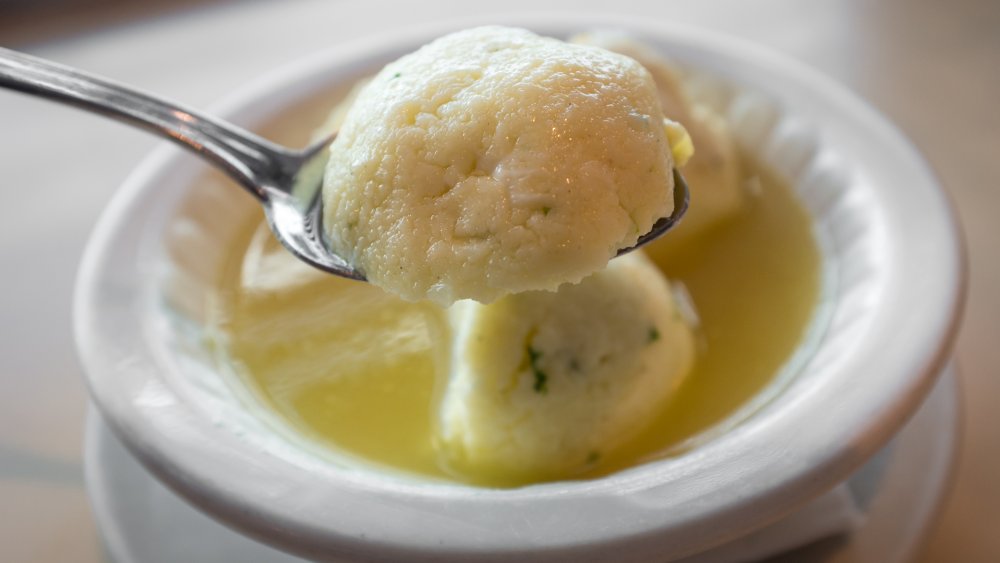The Untold Truth Of Unleavened Bread
Chances are, the first time you heard of "unleavened bread" it was in a religious context. (Unless you were "today years old" the first time you heard of it — if so, keep reading.) Unleavened bread is simply bread made without yeast. It holds importance for some religions due to its significance in the Bible.
According to Time, in the Biblical story of Passover, when the Israelites were finally freed from slavery (we're talking hundreds of years and ten plagues), they were in such a hurry to leave Egypt they didn't have time to wait for their bread to rise, so they departed with unleavened bread. Today, unleavened bread is used to celebrate the Jewish observance of Passover.
Unleavened bread is also used in the Christian religion for partaking in Communion. In the Biblical story of the Last Supper, Jesus asked his Apostles to partake in wine to represent his blood and unleavened bread to represent his body (via Food and Wine).
Cooking with matzah
Unleavened bread is called "matzah" in the Jewish community. It can be prepared all year long but is crucial during Passover when Jews do not eat leavened bread for eight days straight (via Time).
According to Alyonas Cooking, it can be made with only three ingredients: flour, salt, and water. (To observe Passover in the strictest sense, Kosher flour should be used, preferably flour that doesn't come into contact with water during its production.) The ingredients are combined, kneaded together, pinched into balls, rolled out, and cooked on a hot skillet to be enjoyed alongside the Passover meal.
But, what about matzo ball soup? Unleavened bread is also called "matzo," as in the popular soup sold at Jewish delis all over New York City. Turns out, you can make the soup at home by turning those crackers into matzo meal. Once you create the matzo meal, you open up a whole world of possibilities. If you really want to step outside the matzo box, Kitchn says you can even create your own mini matzo house!

